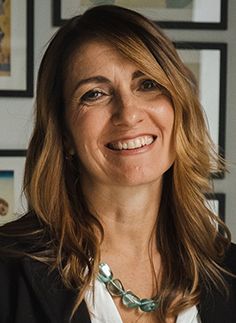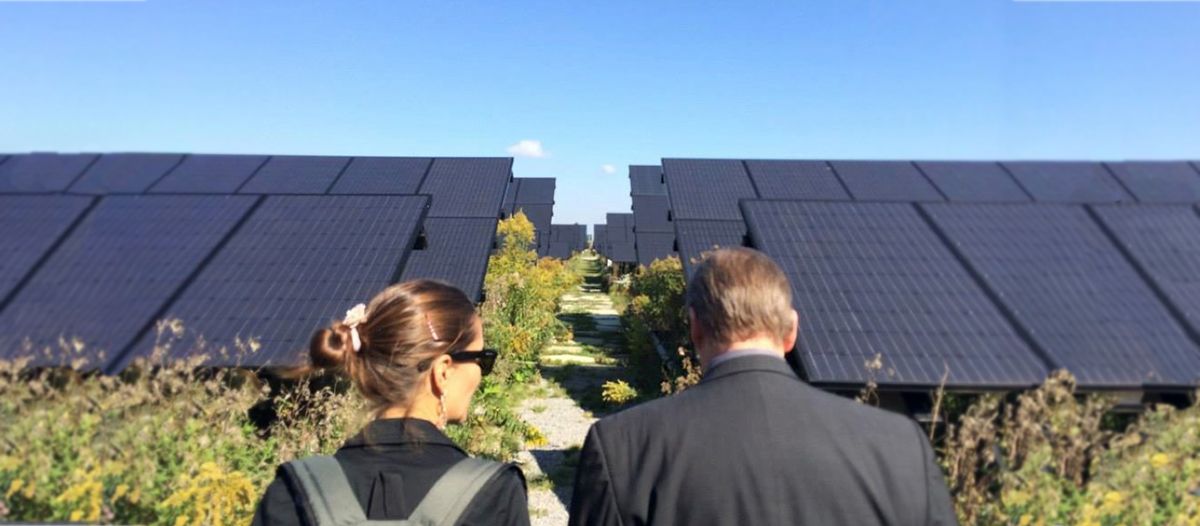WCPEC-8 Conference General Chair:
Dr. Alessandra Scognamiglio
Dr. Alessandra Scognamiglio is appointed to be the Conference General Chair of the WCPEC-8

Dr. Scognamiglio is a licensed architect, holding a master’s degree in architecture in “Preservation of Architectural Assets” from the University of Naples, with a PhD in “Technologies for Architecture and Environment” from the University of Campania. Since 2000 she is a researcher at the Renewable Energy Technology department of ENEA (Italian National Agency for New Technologies, Energy and Sustainable Economic Development) in the photovoltaics and smart networks division. Her main interest lies in the interface between scientific research and design, where she engages in creating a domain of common understanding and experimentations in the real living environment.
Recently, she has been appointed by ENEA as coordinator of the new task force on “Sustainable Agrivoltaics”, establishing a national network of stakeholders from photovoltaics, agriculture, landscape design and environmental organisations. She has been managing several projects related to innovative BIPV and photovoltaics in landscape; including innovative agrivoltaics, and Net Zero Energy Buildings. Her main research topics comprise the use of photovoltaics in buildings and landscapes, where she focusses on trans-disciplinary perspectives like innovative cognitive frameworks creating new design visions.
Being topic organiser of the European Photovoltaic Solar Energy Conference (EU PVSEC) since 2008, she serves to coordinate the programme contributions on the use of photovoltaics in buildings and nature. For the EU PVSEC, she is also the creator and chairperson of the event “Photovoltaics, Forms, Landscapes. Beauty and power of designed photovoltaics”, taking place since 2010. On an international level, she serves as the Italian alternate in the Executive Committee of the IEA SHC (Solar Heating and Cooling), and she is also member of the “Integrated PV” task of ETIP (European Technology and Innovation Platform). She maintains her dedication to architecture as a member of the advisory board of the Master in Architecture at the University of Campania.
She continues to lecture and give supervision to postgraduate masters and holds as well training courses for professionals (engineers and architects), organised by national design and architecture associations, professional associations, universities, and by ENEA itself. She authored more than 100 publications in journals, proceedings and books.
She holds two patents on the use of photovoltaics in buildings and landscapes (Boogie-Woogie photovoltaic glass, and PV-LED street lamp Stapelia), and on the trade marks “Algovoltaico” resp. “Algaevoltaics.”

Solar Strand, University at Buffalo, Buffalo, US. Design: Walter Hood
Photovoltaics: An energy source for all cultures
Italy is one of the countries in Europe with ambitious renewable energy targets regarding photovoltaics, but also the one with the highest density of UNESCO heritage sites. Along with increasing area requirements of ever larger photovoltaic power plants, we witness often that this new and clean energy technology is in contraposition to landscape preservation and cultural heritage. I would very much like this conference to offer a unique occasion for also showing how photovoltaic technology and landscape preservation can go hand in hand, if trans-disciplinary visions are shared and appropriate solutions are selected for capturing the beauty and the adaptability of photovoltaic technology and enabling a landscape transformation which is sustainable if we manage it by means of appropriate design strategies.
Learning from the success of using buildings as an “energy generator” we are now entering in the next challenge of embedding an energy infrastructure in our cultural landscape, when photovoltaic systems are growing larger and more visible, and the demand for even more systems can result in exceeding readily available areas. Photovoltaics has made tremendous progress all over the world, but I also see the challenge to offer new visions for making photovoltaics a matter of culture, very much different from all other energy technologies. The landscape is the medium through which a society represents itself. Indeed, thanks to new integration options and new visions, photovoltaics can enhance landscape democracy.
Concerned about their future, the great majority of countries on this planet are applying photovoltaic technologies. I cannot imagine any better occasion than this 8th World Conference on Photovoltaic Solar Energy Conversion to embrace all the different cultures. And as it will take place in Italy I am confident that the long cultural history of this country can give enthusiasm and spirit to the PV communities in the world.
I feel honored and grateful to serve as General Chair for this event.
Dr. Alessandra Scognamiglio
Senior researcher with many years of experience in the use of photovoltaics and buildings, coordinator of the task force “Sustainable Agrivoltaics” at ENEA